The 18 Best Project Management Control Software
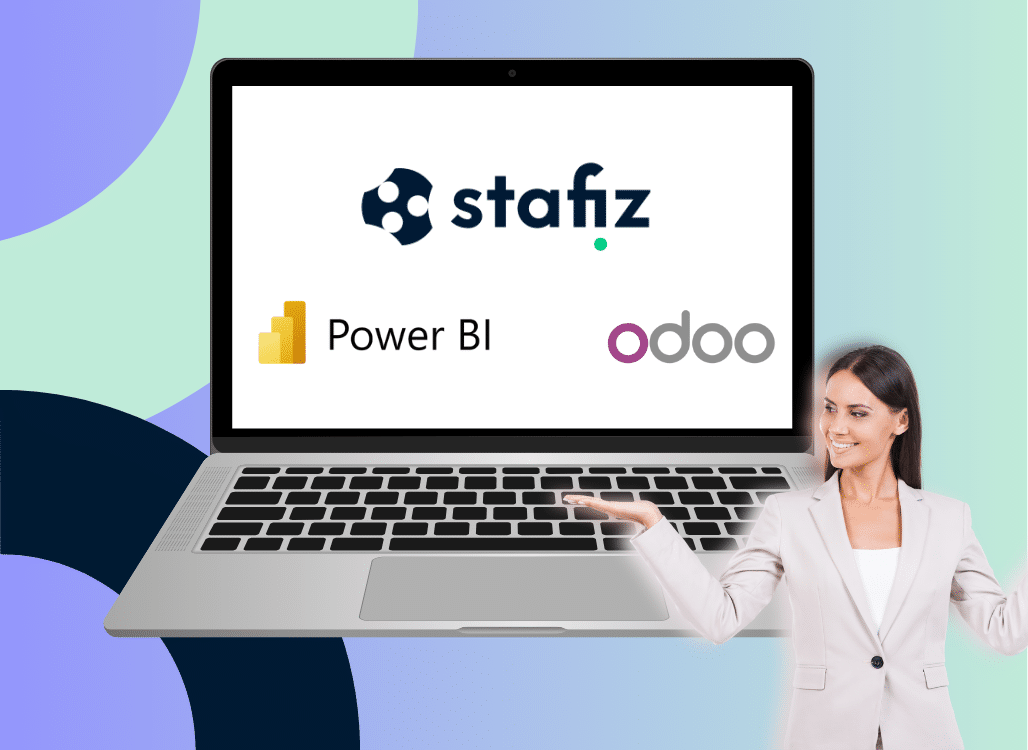
The importance of project management control is not negligible. The use of dedicated software is recommended to gain in efficiency and reliability.
However, the choice of project management control softwaremust be well thought out: it is an investment in terms of both financial and human resources .
In addition, not all solutions are suitable for all types of structures.
To help you in this process, we offer you in this article a comparison of project management control software which lists 18 tools, classified by needs.
Project Management Control Software Comparison
This comparison of project management control software addresses several needs, depending on the size of the company and expectations.
- For small structures with fewer than 50 employees, we advise you to choose easy-to-use tools organized into modules such as Stafiz or Power BI connected to a light ERP.
- For medium-sized companies, between 50 and 500 employees, we recommend specialized business solutions, such as Stafiz, Kantata, Planview or a Business Intelligence tool coupled with an ERP.
- For large groups with a number of employees greater than 500, our recommendation is to favor a specialized business solution, coupled with powerful EPM solutions such as Anaplan or Pigment, integrated with a historical ERP such as SAP or Oracle.
| Stafiz | Project Sale (PSA) | Complete (planning, invoicing, reporting), easy to use, French SaaS | Easy | SME / Mid-cap service company |
| Kantata | Project Sale (PSA) | Advanced financial management, multi-BU reporting, automations | Medium / Complex | SME / Mid-cap service company |
| Microsoft Dynamics 365 | ERP + CRM | Integrated, feature-rich, ERP + CRM, Microsoft ecosystem | Complex | Large companies |
| SAP S/4HANA | ERP | Historical, highly customizable, powerful ERP | Complex | Large groups |
| Oracle NetSuite | ERP | Advanced, multi-currency, multi-legislation financial features | Medium / Complex | SMEs / ETIs / Large companies |
| Sage X3 | ERP | Ergonomics appreciated, adapted to SMEs | Medium | SME / ETI |
| Cegid XRP | ERP | Adapted to the French legal framework, finance and reporting | Medium | SME |
| Odoo | ERP | Open-source, modular, customizable | Medium | SME / Large IT Services |
| Anaplan | Financial management | Complex scenarios, highly customizable | Complex | Large groups |
| Pigment | Piloting | More agile | Medium | Mid-sized / Large companies |
| Board | Financial management | Finance-strategy alignment, simulation | Medium / Complex | Large companies |
| Tagetik | Financial management | Powerful budgets and forecasts, scenarios | Medium / Complex | Large groups |
| Oracle EPM | Financial management | Regulatory, multi-entity reporting | Complex | Large groups |
| Power BI | BI and reporting | Microsoft integration, broad community | Medium | Any type of business |
| Table | BI and reporting | Interactive visualizations, aesthetics | Medium | Mid-sized / Large companies |
| Qlik Sense | BI and reporting | AI and ML for advanced analytics | Medium / Complex | Mid-sized / Large companies |
| Looker Studio | BI and reporting | Free, integrated with Google, simple | Easy | SMB / Large Enterprises |
Management Control Software for Project Sales
Here is a selection of management control software suitable for consulting firms, agencies and IT Services where the business model is focused on project sales. In this type of structure, management control is then inseparable from project monitoring.
Stafiz, designed by and for service professionals
Stafiz is a SaaS software that allows project management, workload and budget planning. Designed for service professionals, it allows the monitoring of costs and margins by project and by customer.
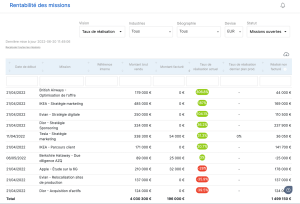
Monitoring the profitability of mission-by-mission projects in Stafiz
Aware of the challenges for this type of structure, Stafiz allows:
- multi-axis reporting,
- recognition of turnover,
- Billing follow-up and automated invoicing,
- resource allocation, even across business units,
- the forecast monitoring of activity and profitability.
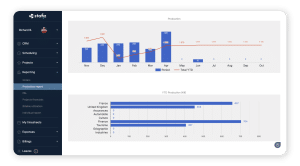
Revenue forecast in Stafiz
- Benefits
As a complete solution, Stafiz takes care of both operational management and management control. A French tool capable of supporting your growth, Stafiz offers a relatively easy to use ergonomics with a reasonable implementation time.
- Disadvantage
Stafiz does not support certain features like banking integration.
- Who is Stafiz for?
Service companies of any size looking for features such as data centralization, budget planning and tracking, resource allocation, invoicing, reporting, among others, and who need a quick and easy implementation.
Kantata
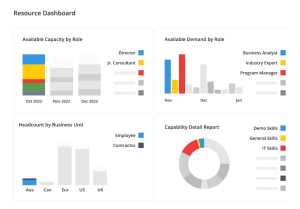
Kantata is a PSA software and supports project management, finance, resource tracking, and invoicing. Like Stafiz, it is aimed at service companies with a strong need for visibility on projects, their costs, human resources and profitability.
Kantata specializes in business project management with a focus on financial control.
- Benefits
Kantata is known for its automation capabilities. The many resources (blog, podcast, white papers, case studies) make it easy to get started.
- Disadvantages
Personalization is sometimes pointed out. The interface and ergonomics are not always fluid. Some slowness is reported when it comes to processing large data. In addition, the learning curve can be high.
- Who is Kantata for?
SMEs that need to go far enough in terms of reporting, for example, with a need for multi-BU management, but who also have enough resources to configure and implement the tool.
💻 Alternatives: An often-cited alternative to Kantata is Sciforma, now owned by Planview.
Microsoft Dynamics 365, Microsoft ERP and Combined CRM
Microsoft Dynamics 365 is Microsoft's ERP and CRM solution.
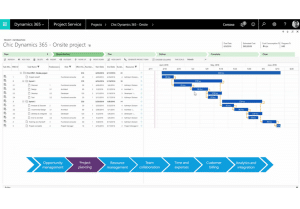
- Benefits
Microsoft Dynamics 365 is a very comprehensive, feature-rich, and customizable solution. It integrates seamlessly with Microsoft's suite of tools.
- Disadvantages
This cumbersome solution is complex to use, with a high learning curve. Slowness and bugs are observed. The cost is high, and some features require the addition of modules and therefore an additional cost.
- Who is Microsoft Dynamics 365 for?
Mainly large structures with substantial financial resources, and time because the implementation can represent a large-scale project.
💻 Alternatives: SAP S/4HANA, SAP's ERP, is often cited as an alternative to Microsoft Dynamics 365.
Project management control tools for financial management
Some companies, such as large groups, have high financial management needs. This type of project management control software requires global management, as well as the establishment of provisional budgets, the creation of scenarios and often a high degree of customization.
Anaplan, the solution for complex scenarios
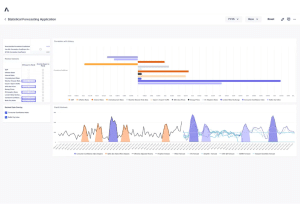
Anaplan is a comprehensive tool that provides project and portfolio planning, budget forecasting and management, resource management, and reporting.
- Benefits
Anaplan is powerful, and the use of AI makes it easy to model complex scenarios for budget forecastingthe resource planning or costs. Anaplan is highly customizable and scalable.
- Disadvantages
This tool offers a wide range of possibilities in terms of customization, but everything has to be built. A dedicated and trained team is often needed to implement and manage the solution. Maintenance requirements are high. In addition, Anaplan has a high cost, to which must be added the services of consultants, which are not so common on the market.
- Who is Anaplan for?
Large companies and groups with high resources, both financially and in terms of resources.
Pigment, the French financial management tool
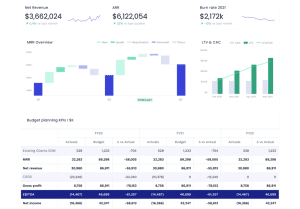
Pigment is an alternative to Anaplan, which is lighter and faster to deploy.
- Benefits
Pigment is a recent French solution. Created in 2019, the company has a reputation for listening to user feedback. It is renowned for its automations and flexibility.
- Disadvantages
Although Pigment's learning curve is more accessible than Anaplan's, it still requires a certain level of modeling knowledge. Pigment remains expensive and complex to set up for small structures.
- Who is Pigment for?
Medium to large enterprises, with multiple departments, financial resources, and resource capabilities to manage implementation and usage.
Other alternatives
Tagetik, Board or Oracle EPM are often cited as alternatives. These very comprehensive solutions are mainly aimed at large groups such as banks or industries because they can be complex for SMEs.
Tagetik allows you to simulate scenarios and model budgets. On the other hand, this solution is less designed for day-to-day operations and offers fewer possibilities for monitoring tasks and schedules. This is a high-priced solution that requires qualified profiles for implementation.
Board is adapted to align the financial department with the operational and strategic aspects. It is aimed at large companies that want to predict and simulate the impacts of projects on profitability.
Oracle EPM is primarily aimed at large companies with multiple entities and currencies that have regulatory reporting needs. Complex to implement, customize, and use, Oracle EPM requires the intervention of specialized resources or even partners.
ERPs and Integrated Solutions with Management Control Modules
In this section, we will focus on ERPs that offer management control modules. This type of solution is aimed at structured companies, which want a unified information system, thus connecting finance, project and HR.
SAP, the historical ERP
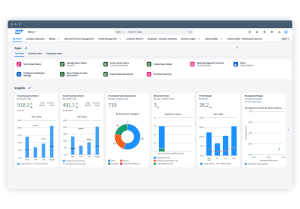
As the leader in the ERP market, SAP is mainly aimed at large groups and multinationals, although some modules of the solution are more aimed at SMEs.
- Benefits
SAP offers a wide range of features. SAP is highly customizable and is designed to integrate with other tools.
- Disadvantages
This solution is complex to implement and maintain. It requires specialized consultants or partners and is expensive. It is also difficult to use.
Oracle Netsuite, the ERP to understand growth
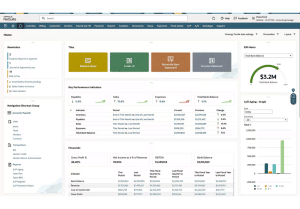
Oracle Netsuite is popular with companies with high financial needs. Indeed, it offers many advanced features in this area, especially with full integration with accounting. It allows global management with multi-currency or multi-legislation.
- Benefits
Oracle Netsuite offers powerful financial capabilities for global contexts.
- Disadvantages
Customization is complex to set up and may require the intervention of dedicated partners or experts.
Sage X3, the ERP more accessible to SMEs and mid-caps
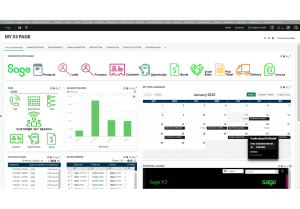
Sage X3 is a robust ERP that offers dedicated modules for finance, supply chain, production, logistics and sales.
- Benefits
The features are comprehensive. Sage X3 is customizable and its ergonomics are considered more pleasant than those of its competitors.
- Disadvantages
Sage X3 is perhaps less suitable than SAP and Oracle Netsuite for very large companies that need to manage multi-country. There are fewer partners than for SAP and Oracle Netsuite. Like many of the ERPs on this list, Sage X3 is complex to use.
Cegid XRP, the ERP adapted to the French legal framework
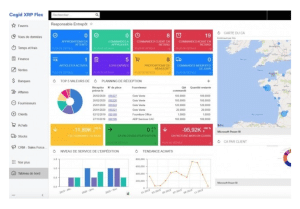
Cegid XRP covers the needs of finance, HR, commerce, and offers management and reporting features.
- Benefits
Cegid XRP is a French solution that understands the needs and specificities of France when it comes to taxation, accounting or regulatory framework.
- Disadvantages
This solution is less recognized internationally, and therefore less suitable for global management.
Odoo, the modular open-source ERP

Odoo is a Belgian software, which exists in two versions: open-source and premium.
- Benefits
Odoo is more accessible in terms of user experience. This software is highly customizable and offers a wide variety of configurations. Implementation is easy, and many integrators are trained to help you get started. Its intuitive user interface is appreciated.
- Disadvantages
The pricing policy is often raised, considered aggressive. Odoo remains cumbersome, however, also requiring the involvement of a partner.
BI & Reporting Solutions for Project Management Control
Although the software we are now going to present to you is not strictly speaking project management control software, it can integrate with it to help you exploit and visualize the data while adding an analytical layer. Thus, they do not cover the project accounting logic and need to be connected to an ERP.
Power BI, the historical BI tool
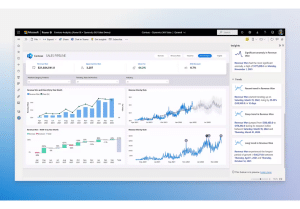
Power BI is a powerful data visualization tool, part of the Microsoft suite.
- Benefits
Power BI is a historical tool in the field of data visualization, which allows it to have many tutorials, connectors and a large community. Power BI offers many features. Owned by Microsoft, it integrates effectively with the other tools in the suite, including Excel, Azure or Microsoft Dynamics 365.
- Disadvantages
Power BI can be cumbersome to use if it processes very large volumes of data. The visualization options are smaller and less aesthetically pleasing than with Tableau. Power BI can be complex to use without training.
Tableau, the design and interactive visualization software
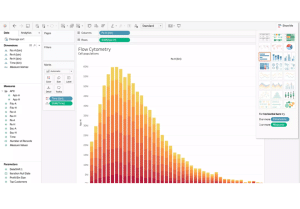
Tableau is a data visualization tool now owned by Salesforce.
- Benefits
Tableau allows for great flexibility in the choice of visualizations. The visuals are interactive and attractive. Tableau is well connected with all the tools in the Salesforce suite because it is now part of its ecosystem. There are many extensions and a large community.
- Disadvantages
Tableau can sometimes require some technical skills and the learning curve can be long.
Qilk Sense, the analytics solution that uses AI and ML
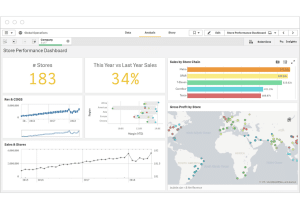
Qilk Sense is a data visualization tool that uses AI and machine learning to deliver an advanced level of analytics.
- Benefits
The many features, enhanced by AI, make Qilk Sense a powerful and efficient software.
- Disadvantages
The learning curve can be complex and requires data analysis skills.
Looker Studio, Google's data visualization tool

Looker Studio, formerly known as DataStudio, is a data visualization software, part of the Google suite.
- Benefits
The free version is convincing. Integrations with Google tools are made easy. The tool is relatively simple to use and learn.
- Disadvantages
Looker Studio has a few bugs when it comes to processing large amounts of data. Customization is complicated. Support is limited for the free version.
Questions:
There is no best universal project management control software, as the choice depends on the specific needs, size, and industry of the business.
- Fewer than 50 employees: Opt for simple tools.
- Between 50 and 500 employees: Adopt a specialized solution.
- More than 500 employees: turn to business solutions coupled with powerful EPM tools and integrated with the existing ERP.


